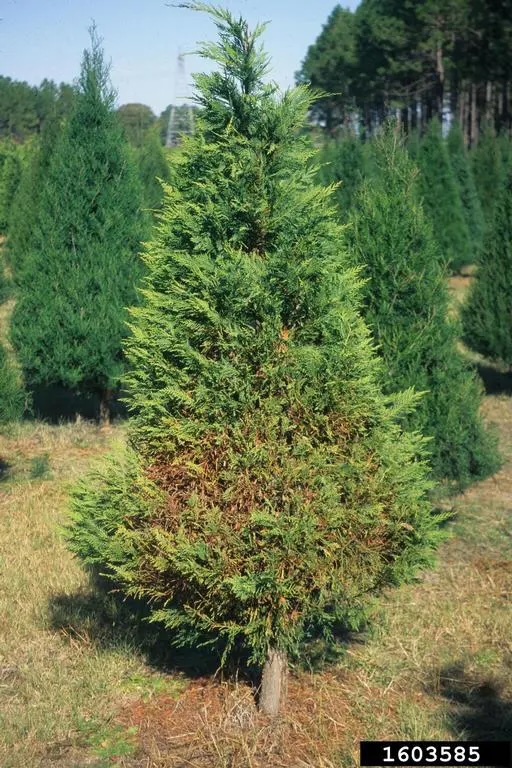What’s Wrong With My Leyland Cypress?
go.ncsu.edu/readext?1019075
en Español / em Português
El inglés es el idioma de control de esta página. En la medida en que haya algún conflicto entre la traducción al inglés y la traducción, el inglés prevalece.
Al hacer clic en el enlace de traducción se activa un servicio de traducción gratuito para convertir la página al español. Al igual que con cualquier traducción por Internet, la conversión no es sensible al contexto y puede que no traduzca el texto en su significado original. NC State Extension no garantiza la exactitud del texto traducido. Por favor, tenga en cuenta que algunas aplicaciones y/o servicios pueden no funcionar como se espera cuando se traducen.
Português
Inglês é o idioma de controle desta página. Na medida que haja algum conflito entre o texto original em Inglês e a tradução, o Inglês prevalece.
Ao clicar no link de tradução, um serviço gratuito de tradução será ativado para converter a página para o Português. Como em qualquer tradução pela internet, a conversão não é sensivel ao contexto e pode não ocorrer a tradução para o significado orginal. O serviço de Extensão da Carolina do Norte (NC State Extension) não garante a exatidão do texto traduzido. Por favor, observe que algumas funções ou serviços podem não funcionar como esperado após a tradução.
English
English is the controlling language of this page. To the extent there is any conflict between the English text and the translation, English controls.
Clicking on the translation link activates a free translation service to convert the page to Spanish. As with any Internet translation, the conversion is not context-sensitive and may not translate the text to its original meaning. NC State Extension does not guarantee the accuracy of the translated text. Please note that some applications and/or services may not function as expected when translated.
Collapse ▲In recent weeks, I have received calls about Leyland Cypress trees turning brown across the county. Several factors can cause this, but it all begins at the beginning of how the tree was created. Originating as a hybrid in 1888 in Wales, UK, the Leyland Cypress is a cross between Alaska Cedar and Monterey Cypress. Known for its rapid growth and resilience to pruning, it quickly gained popularity as a favored choice for creating natural barriers in landscapes. Its ability to thrive in diverse soil conditions further contributed to its widespread use. Both the Alaskan Cedar & Monterey Cypress are native to the West Coast of the US, however, on different ends and would not have naturally crossed without human intervention.
Typically utilized as border trees, Leyland Cypresses are often planted closer together than recommended. On average, they can have a 20’ width, and close planting limits airflow between trees and increases competition for soil resources. This compromised environment makes the trees susceptible to various diseases.

Leyland being used as a screen, planted to where they do not need to compete for resources and have adequate airflow – reducing stress and disease on the tree. Clemson Cooperative Extension
One of the more common diseases affecting Leyland Cypress trees is needle blight, caused by the fungus Passalora Sequoia. This condition starts through the browning and shedding of needles, starting from lower branches and progressing towards the tips. Effective management involves ensuring adequate airflow around the trees when planting and the application of fungicides containing active ingredients like thiophanate-methyl and myclobutanil may help (be sure to read the pesticide label before using!!).
Cankers on limbs and trunks, caused by weather stress such as drought, can also affect the Leyland’s. The more prevalent canker disease is Seridium Canker and, unfortunately, there is no control for this other than pruning. It is recognizable by the death of the limb or needles past the canker. The canker will appear as a dark red or brown spot and tree sap will be present. When pruning the affected area, cut the canker and be sure to sterilize your cutters between cuts to prevent the disease from spreading.
A pest affecting Leyland Cypress trees is the Bagworm, which is often mistaken as cones. They are identified as cylindrical bags hanging from branches. Controlling Bagworms involves physical removal during winter to prevent heavy infestations.
To maintain healthy Leyland Cypress trees, it all begins when you plant. Ideally, trees should be spaced at least 15’-20’ apart to ensure adequate airflow and reduce competition for resources, causing stress. Considering a variety of plants like Green Giant Arborvitae or Japanese Cedar can also help diversify the landscape and deter pests and disease.








